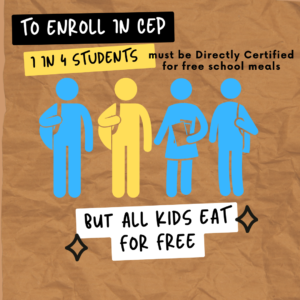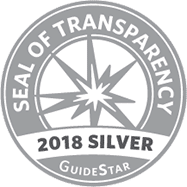
What is CEP?
The Community Eligibility Provision (CEP) is a new national approach to child nutrition. It provides funding for free school breakfast and lunch for 100% of students without requiring take home applications.
 Starting this school year in Allegheny County, 9 districts, 3 charter networks, and 1 individual school are serving school breakfast and lunch to all of their students through CEP.
Starting this school year in Allegheny County, 9 districts, 3 charter networks, and 1 individual school are serving school breakfast and lunch to all of their students through CEP.
That comes to more than 41,000 students in Allegheny County who have daily access to school breakfast and lunch at no cost to their families.
Who is eligible?
Any individual school, group of schools, or school district with 25% or more “identified students” can participate in CEP.
“Identified students” include children who are directly certified for no cost school breakfast and lunch because they live in households that participate in the…
It also includes students who are…
How does it work?
Instead of take home applications, schools use direct certification percentages based on the number of “identified students” enrolled in the school.
The school or local education agency (LEA) must have an identified student percentage of at least 25% to opt into CEP. If so, the school or LEA serves breakfast and lunch to 100% of students and receives a Federal reimbursement to cover the majority or all of the costs.
 Federal reimbursements are determined by multiplying the percentage of “identified students” by 1.6 to determine the percent of meals that will be reimbursed at the free rate.
Federal reimbursements are determined by multiplying the percentage of “identified students” by 1.6 to determine the percent of meals that will be reimbursed at the free rate.
For example, a school with 50% identified students would be reimbursed at the free rate — the amount the federal government normally pays schools to cover their free meals — for 80% (50% x 1.6) of the breakfasts and lunches eaten. The remaining 20% of meals would be reimbursed at the paid rate — the amount schools usually get to help cover the costs of providing meals to paying students. You can use this interactive slider tool from USDA to calculate your reimbursement percentages.
What are the benefits?

Overall greater participation in school meals…



